Disclosure: This article contains affiliate links. We may earn a commission from purchases at no extra cost to you, which helps our travel content.
There's something profoundly humbling about standing before nature's raw magnificence in South Luangwa one week and then witnessing humanity's ancient architectural triumphs in Petra the next. As someone who has spent decades navigating the delicate balance between luxury hospitality and environmental consciousness, I find these two destinations represent perfect counterpoints in the photography world—one showcasing Earth's untamed creativity, the other displaying human ingenuity carved into stone. This spring, I embarked on what I can only describe as a photographer's pilgrimage: a two-week journey from the wildlife-rich floodplains of Zambia to the rose-colored canyons of Jordan. Armed with my camera gear, marathon-trained stamina, and an appetite for plant-based culinary discoveries, I set out to capture these contrasting worlds through my lens. Join me as I share the technical insights, compositional strategies, and mindful approaches that helped me document these extraordinary landscapes—and how you can do the same on your own photographic expedition.
Preparing Your Gear: The Technical Essentials
After twenty years of travel photography across six continents, I've learned that the right equipment makes all the difference—especially when facing the extreme conditions of African safaris and Middle Eastern deserts.
For South Luangwa, versatility is paramount. The park's diverse landscapes and unpredictable wildlife demand a telephoto lens with significant reach. My telephoto zoom proved invaluable for capturing distant leopards in acacia trees and hippos submerged in the Luangwa River. However, don't make the mistake I initially did of neglecting wide-angle options. The expansive savanna sunsets and starry night skies demand a quality wide lens.
Petra presents entirely different challenges. The narrow Siq canyon leading to the Treasury creates dramatic lighting conditions, while the vast scale of monuments requires careful composition. Here, my travel tripod became my most essential companion, particularly for low-light shooting at dawn and dusk when the rose-colored stone comes alive with subtle hues impossible to capture handheld.
Both locations present unique environmental challenges. In South Luangwa, fine dust infiltrates everything during game drives. I learned to change lenses inside a camera bag or vehicle, using a rocket blower to clean sensors daily. Petra's challenge is the opposite—heat. Temperatures even in spring can soar, causing camera batteries to drain rapidly. I carried three spares and stored them in an insulated pouch.
Perhaps most importantly, remember that weight restrictions on small safari planes in Zambia are stringently enforced. My solution was a modular camera backpack that allowed me to reconfigure based on each day's shooting plans rather than carrying everything simultaneously.
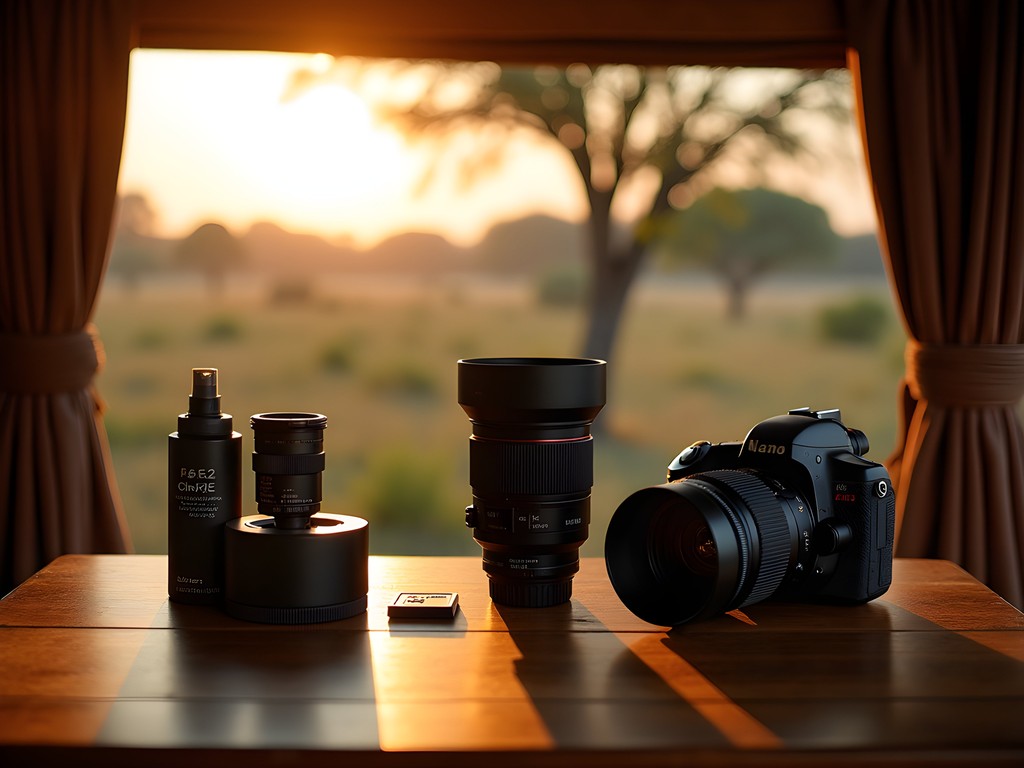
💡 Pro Tips
- Bring a rocket blower and microfiber cloths for daily sensor cleaning in dusty environments
- Use a polarizing filter in both locations to manage harsh midday light and enhance colors
- Pack a lightweight rain cover for your camera gear during Zambia's unpredictable spring showers
South Luangwa: Capturing the Rhythm of the Wild
South Luangwa National Park is often called the 'Valley of the Leopard,' but I discovered it offers far more than these elusive cats. The park's unique position along the meandering Luangwa River creates a photographer's paradise of contrasts—lush riverbanks against dry bushland, microscopic insect life alongside massive elephants.
My days at South Luangwa fell into a natural rhythm dictated by light and animal behavior. I rose before dawn each morning, when the air hung heavy with mist over the floodplains. This 'golden hour' isn't just photography jargon here—it's when the landscape transforms. Impala herds emerge from the darkness as silhouettes, and the first rays illuminate giraffes as living sculptures against acacia trees. These moments demand patience and preparation.
The midday hours, which many photographers dismiss, offered unexpected opportunities. While harsh light isn't ideal for wildlife portraits, I used these hours to capture behavioral sequences—elephants dust-bathing, baboons in social grooming rituals, or the hypnotic patterns of zebra herds crossing open plains. I switched to black and white processing for many of these midday shots, turning challenging lighting into dramatic contrast.
Evening game drives provided my most memorable images. Positioning ourselves near water sources as the day cooled, we witnessed the convergence of species in a complex dance of predator and prey. One evening, as the setting sun painted the sky in impossible oranges and purples, a leopard emerged silently from the brush near our vehicle. Rather than rushing to photograph the cat itself, I waited, composing a wider shot that captured both the magnificent predator and the landscape it inhabits—telling a more complete story of this ecosystem.
Night drives, unique to private concessions in South Luangwa, revealed a hidden world. Using a specialized camera flash with red filters to avoid disturbing nocturnal creatures, I photographed genets, civets, and even a pack of wild dogs on the hunt—experiences impossible in many other safari destinations.
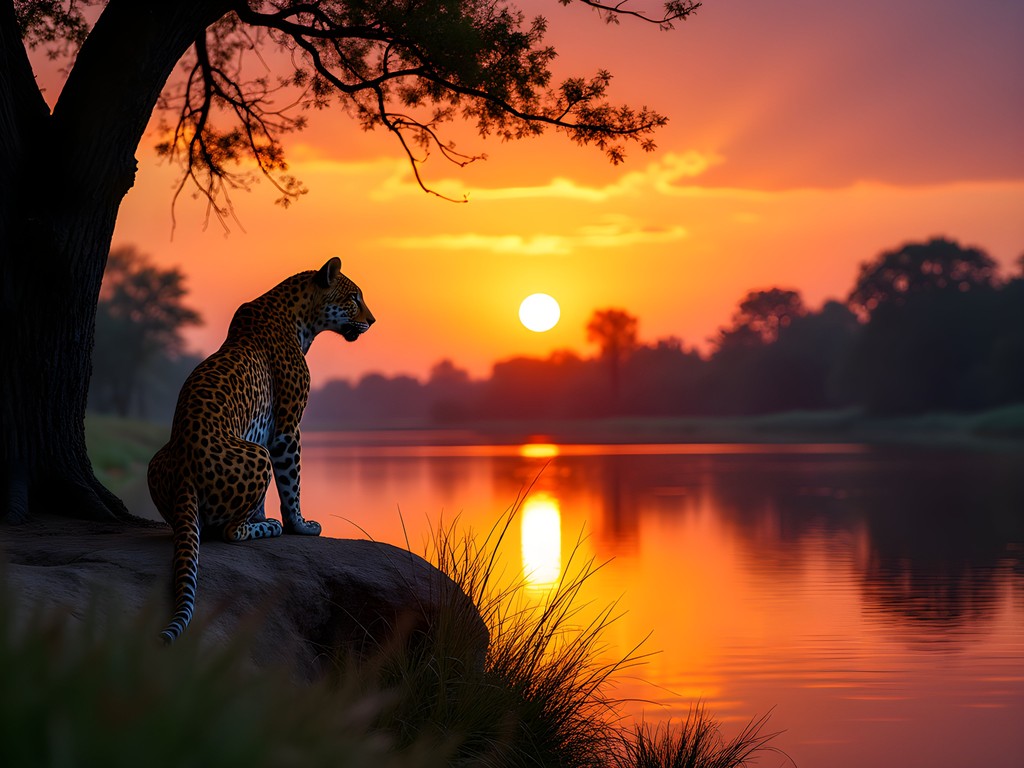
💡 Pro Tips
- Position yourself with the sun at your back during morning and evening game drives for optimal lighting on wildlife
- Use burst mode when photographing birds in flight or predators in action to capture the perfect moment
- Learn to predict animal behavior by observing their eyes and ears—often providing 1-2 seconds warning before significant action
Petra: Mastering Light in Ancient Stone
Transitioning from the untamed wilderness of South Luangwa to the architectural precision of Petra creates a fascinating photographic juxtaposition. While wildlife photography often involves split-second timing, Petra demands contemplation—a meditation on light, history, and human achievement carved into rose-colored sandstone.
My approach to Petra was methodical, almost marathon-like in its pacing. Having researched the site extensively, I knew the conventional postcard shots but sought perspectives that revealed deeper narratives. This began with timing. While tour groups flood the Treasury plaza by mid-morning, I arranged special early access through my accommodation, arriving at the Siq entrance before dawn. The 1.2km walk through this narrow canyon becomes a lesson in anticipation as slivers of light gradually illuminate the towering walls.
The Treasury (Al-Khazneh), Petra's most iconic facade, presents unique challenges. Its position, recessed within a small plaza surrounded by high cliffs, creates extreme contrast between shadow and highlight. I bracketed exposures extensively here, later blending them to capture both the intricate facade details and the subtle colors of the surrounding canyon. Moving beyond the Treasury, where most visitors turn back, revealed Petra's true photographic treasures.
The Monastery (Ad-Deir), requiring an 800-step climb that tested even my marathon-conditioned legs, offers spectacular compositional opportunities. I spent an entire afternoon here, watching shadows migrate across its massive facade. Rather than simply documenting the structure, I incorporated Bedouin tea sellers and their camels in foreground elements, creating scale and human connection.
Petra's High Places—ancient ceremonial platforms atop the surrounding mountains—provided my most memorable photographs. Using my wide-angle lens, I captured sweeping vistas of the entire archaeological complex bathed in late afternoon light. These elevated perspectives reveal what ground-level photography cannot: the ingenious integration of Nabataean architecture with the natural landscape.
Night photography in Petra deserves special mention. Three evenings weekly, the Treasury is illuminated by hundreds of candles for the 'Petra by Night' experience. While beautiful, this event attracts crowds. Instead, I arranged with local Bedouin guides for access to less-visited monuments at night, where with careful long-exposure techniques, I captured the ancient city under brilliant stars—connecting Petra's past to the eternal cosmos above.
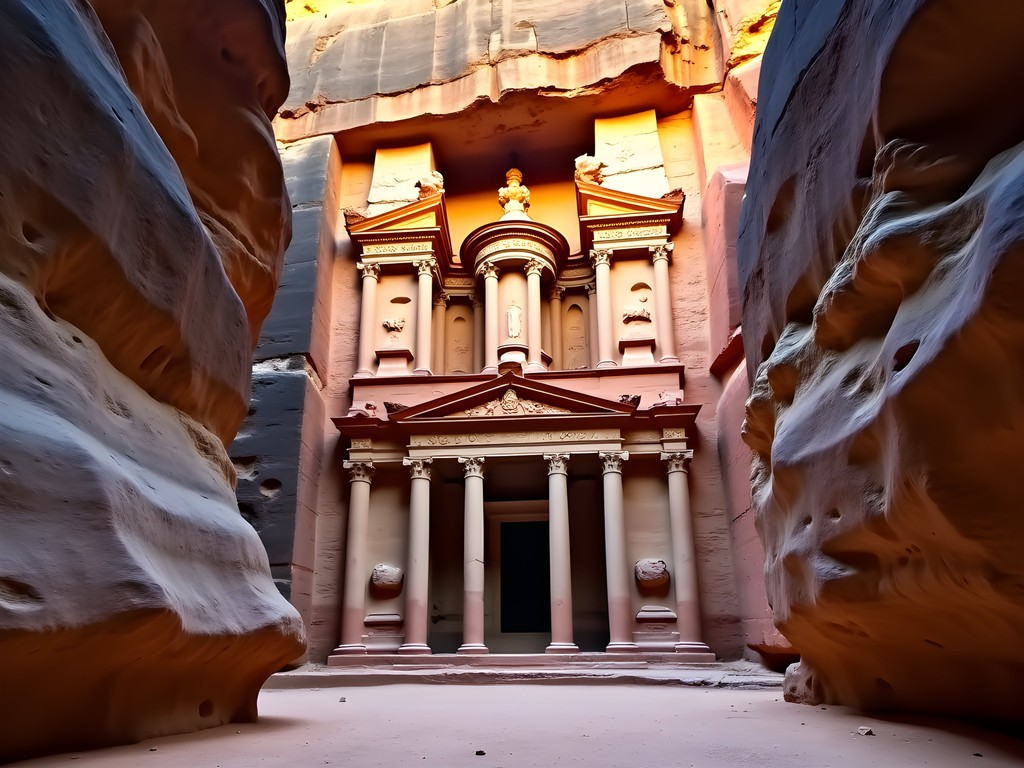
💡 Pro Tips
- Visit the Treasury twice—at opening time (6am) for fewer crowds, and in late afternoon when the facade glows with reflected light
- Pack microspikes or trail running shoes with excellent grip for safely navigating Petra's slippery stone surfaces
- Use a polarizing filter to reduce glare from sandstone and enhance the rich red colors of the monuments
Cultural Sensitivity in Travel Photography
Throughout my hospitality career spanning Wellington to Miami, I've observed how cultural respect creates meaningful connections. This principle applies doubly to photography in culturally rich destinations like Zambia and Jordan.
In South Luangwa's surrounding communities, I learned that photography requires more than technical skill—it demands relationship building. Before photographing local Kunda villagers, I spent time learning basic greetings in the local language and understanding appropriate customs. When visiting a community-run textile workshop near Mfuwe, I first participated in their activities, sharing stories about New Zealand and my Japanese heritage, before asking permission to document their incredible craftsmanship.
Similarly, in Jordan, photographing Bedouin people requires cultural awareness. Many older Bedouin women prefer not to be photographed, while younger generations often welcome it. Rather than simply taking photos, I engaged in conversation first, purchased tea or handicrafts, and explicitly requested permission—often showing my previous images on my camera's LCD screen to establish trust and demonstrate my respectful intent.
This approach extends to wildlife photography ethics as well. In South Luangwa, I witnessed concerning behavior from some photographers pressing drivers to position vehicles too close to animals, particularly predators with cubs. My philosophy remains that no photograph justifies disturbing wildlife or degrading their habitat. Working with experienced guides who prioritize animal welfare over perfect photo opportunities results in more authentic images that truly capture natural behavior.
For cultural and wildlife photography, I rely on my telephoto prime lens for its exceptional image quality and ability to create portraits with beautiful background separation while maintaining a respectful distance. This lens has become my preferred tool for intimate portraiture that honors rather than exploits my subjects.
Perhaps most importantly, I make a point of printing and sending photographs back to communities I've photographed whenever possible. In Zambia, I worked with my lodge to identify families I'd photographed and ensured they received prints—a simple gesture that transforms the photographic relationship from extraction to exchange.
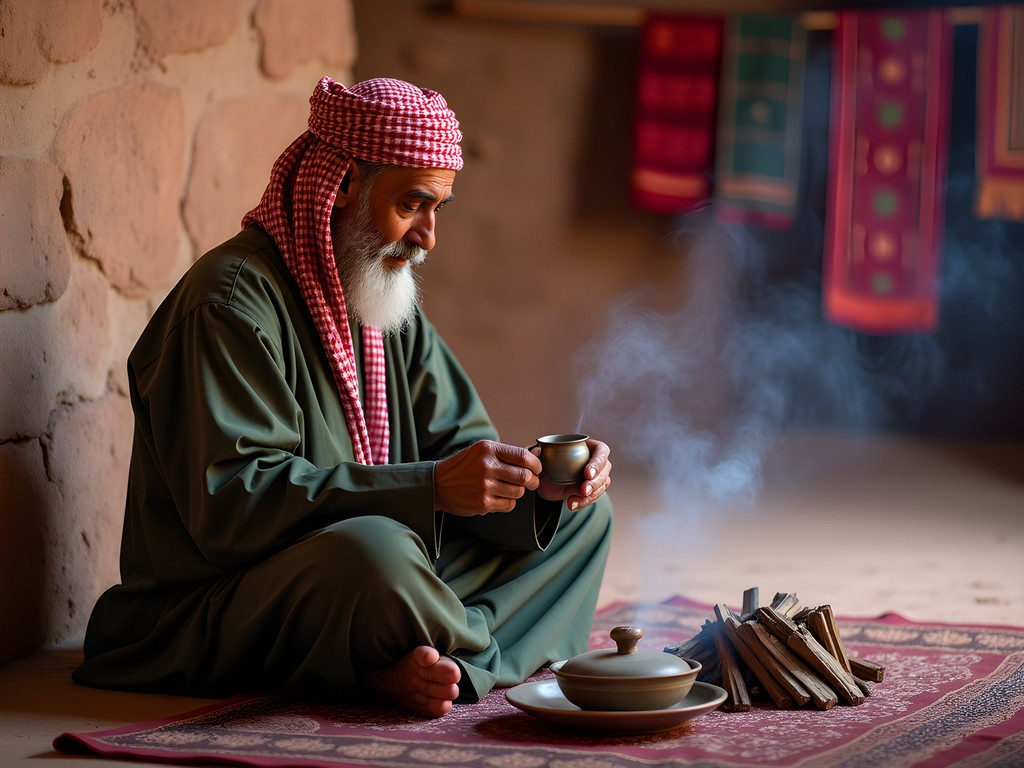
💡 Pro Tips
- Learn basic greetings and 'May I take your photo?' in local languages before your trip
- Carry a portable printer like the Instax Share to give immediate prints to people you photograph
- Research specific cultural sensitivities about photography before visiting—some religious sites prohibit photography entirely
The Vegan Photographer's Journey: Sustainable Travel
Maintaining a plant-based lifestyle while pursuing photography in remote locations presents unique challenges that I've navigated throughout my travels. Both South Luangwa and Petra tested my commitment to ethical eating, but with preparation, I discovered it enhanced rather than limited my photographic experience.
In South Luangwa, I stayed at luxury lodges where I communicated my dietary preferences well in advance. The results were remarkable—chefs prepared innovative plant-based versions of local Zambian dishes using ingredients from their on-site organic gardens. These culinary experiences connected me more deeply to the landscape I was photographing. One morning, after photographing a spectacular leopard sighting, I returned to camp for a breakfast featuring indigenous mushrooms foraged from the same ecosystem where I'd just been shooting—a perfect harmony of photographic and culinary exploration.
For game drives, I packed nutrient-dense, lightweight options in my camera backpack, which brilliantly accommodates both photography gear and personal items in separate compartments. Having proper sustenance during long photography sessions is crucial—hunger compromises both creativity and technical execution.
In Jordan, plant-based eating proved surprisingly accessible. Traditional Jordanian mezze includes numerous vegan options—hummus, moutabal, tabbouleh, and fresh-baked bread became staples that fueled long days of hiking through Petra's vast archaeological site. I discovered that eating lighter plant-based meals helped maintain energy and mental clarity during physically demanding photography sessions in Petra's heat and elevation changes.
Beyond personal health, this approach aligns with responsible tourism. Both destinations face environmental challenges—South Luangwa with poaching and habitat loss, Petra with water scarcity and overtourism. By minimizing my ecological footprint through plant-based eating and careful resource consumption, I practice the environmental ethics that should accompany wildlife and heritage photography.
I've found that my marathon training discipline translates perfectly to the demands of travel photography—both require sustained energy, mental focus, and proper nutrition. The plant-based approach that powers my running also sustains long days behind the camera, creating a harmonious connection between physical wellbeing and creative output.
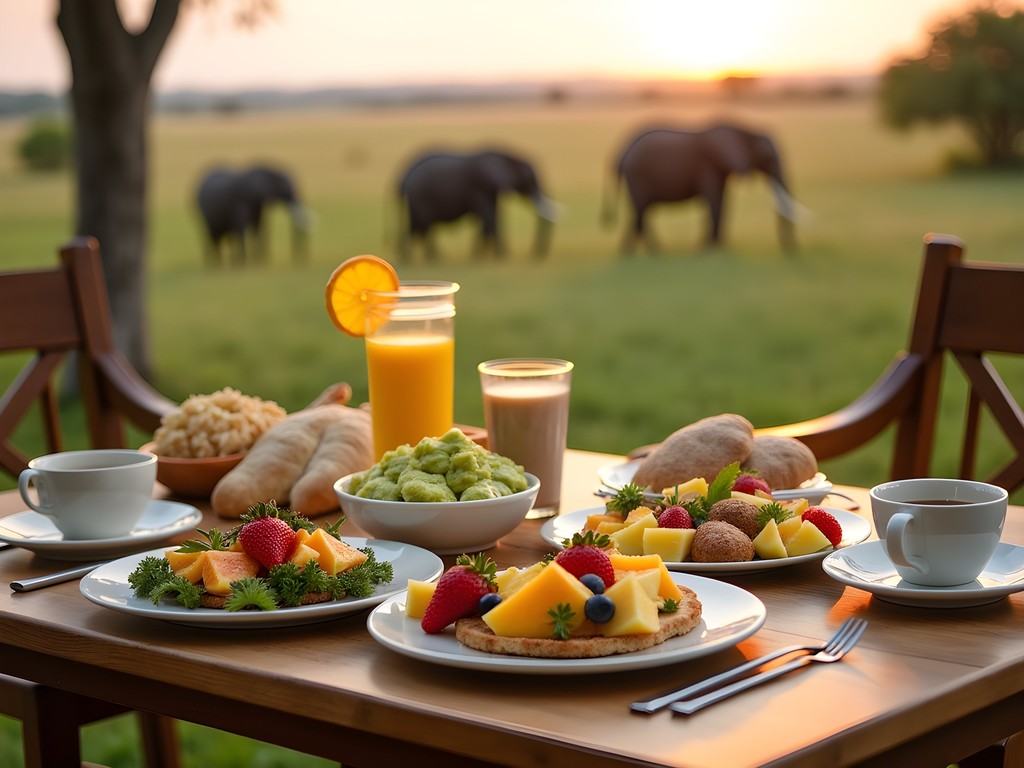
💡 Pro Tips
- Communicate dietary needs to accommodations at least two weeks before arrival, following up 48 hours before check-in
- Pack portable plant-based protein options like dried lentil snacks and nut butters for remote shooting locations
- Use Happy Cow app to research vegan-friendly restaurants near major tourist sites before your trip
Final Thoughts
As I reflect on these two weeks transitioning between South Luangwa's wild heart and Petra's ancient soul, I'm struck by how photography reveals the profound connection between these seemingly disparate worlds. Both landscapes tell stories of resilience—whether through a leopard's patient hunt or Nabataean ingenuity harnessing scarce desert water. Both demand our protection and respectful documentation. My camera served not just as a tool for creating images but as a bridge between cultures, ecosystems, and histories. Whether you're drawn to wildlife's unpredictable drama or architectural precision carved in stone, the photographer's mindful presence—patient, prepared, and environmentally conscious—yields images that transcend mere documentation. I invite you to embark on your own photographic journey between these contrasting worlds, camera in hand and heart open to the transformative power of thoughtful travel. The greatest photographs from South Luangwa and Petra won't simply be the ones technically perfect, but those that capture the authentic spirit of place—and perhaps, in the process, transform something within yourself.
✨ Key Takeaways
- Contrasting destinations like South Luangwa and Petra offer complementary photographic challenges that enhance your overall skills
- Ethical photography requires building relationships, maintaining distance from wildlife, and giving back to local communities
- The best images emerge when you slow down—whether waiting for perfect light on ancient monuments or animal behavior in the wild
📋 Practical Information
Best Time to Visit
April-May for South Luangwa (early dry season); March-May for Petra (mild temperatures, fewer crowds)
Budget Estimate
$10,000-15,000 for a 2-week luxury experience including high-end lodging, private guides, and international flights
Recommended Duration
5-6 days in South Luangwa, 3-4 days in Petra, plus travel days between destinations
Difficulty Level
Moderate To Challenging (Requires Good Fitness For Petra's Extensive Walking And Climbing)
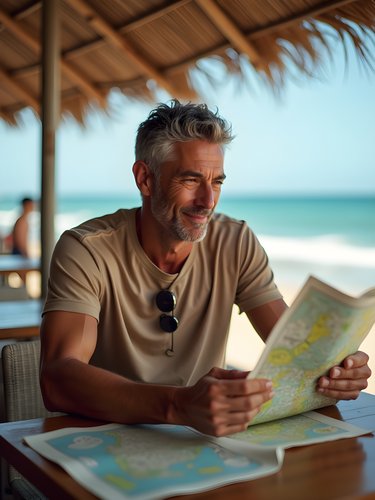
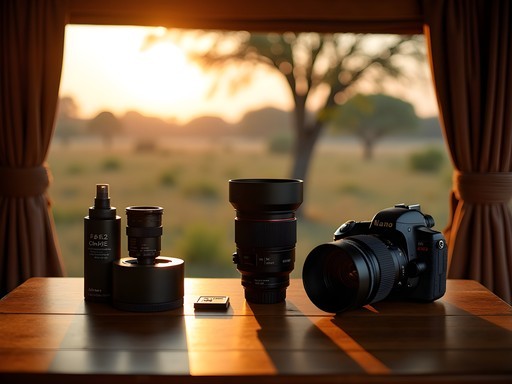
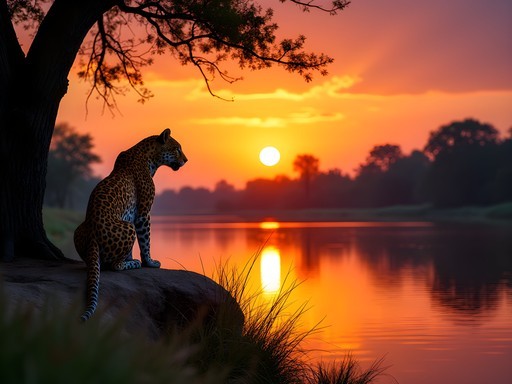
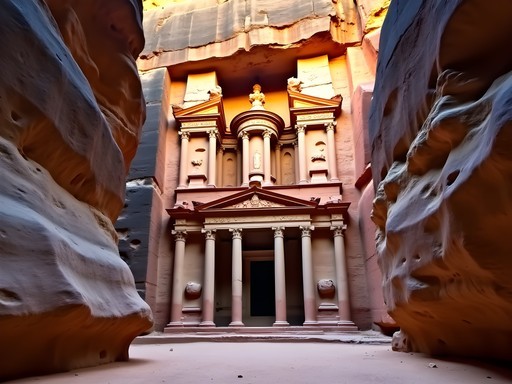

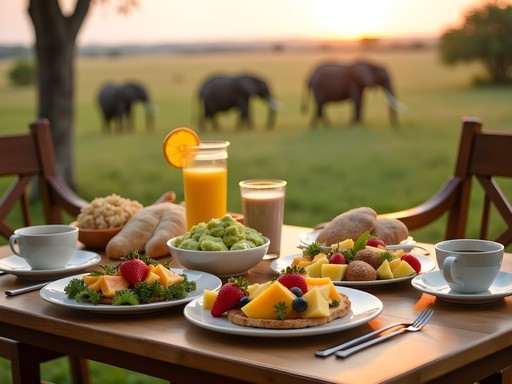










Comments
LightChaser
That section on cultural sensitivity in photography is so important. Thanks for addressing it!
SafariDreamer
Just got back from South Luangwa and your advice about shooting during river crossings was spot on! For anyone going, the Mfuwe area has amazing elephant herds coming through camps in mango season. Got some of my best shots there.
globeclimber1452
Which camp did you stay at? Looking at options now!
SafariDreamer
We split between Mfuwe Lodge (for the elephants walking through reception!) and Kakuli Bushcamp. Both were amazing for different reasons.
PhotoTrekker
Those Petra night shots are incredible! Adding this to my bucket list right now.
WanderlustMama
Beautiful contrasts between these destinations! Did you find it difficult to keep camera gear dust-free in Petra? I'm worried about changing lenses in that environment.
Brandon Tanaka
Great question! Petra was definitely dusty. I brought a small air blower and microfiber cloths, but the real game-changer was changing lenses inside a camera bag or jacket to create a mini dust shield. Also carried two bodies when possible to minimize changes.
globeclimber1452
That shot of the leopard in the golden hour light is INSANE! How long did you have to wait to get that?
Brandon Tanaka
Thanks! Would you believe it was pure luck? Our guide spotted her in a tree, and we waited about 20 minutes before she climbed down and gave us that perfect pose. Right place, right time!
globeclimber1452
Man, that's wildlife photography for you! I spent 3 days in Kruger trying for a leopard shot and only got distant blurry ones. Heading to Zambia next year, definitely bringing my telephoto zoom after seeing your results!
Stephanie Romano
Brandon, this post couldn't have come at a better time! I'm planning a similar trip with my family next year - South Luangwa first, then heading to Jordan. Your tip about bringing both a zoom lens for wildlife and a wide angle for Petra's architecture is spot on. When we did Tanzania last year, I made the mistake of only bringing my telephoto and missed capturing the landscape context. How did your kids handle the transition between such different environments? Mine are 8 and 11, and I'm wondering if splitting these destinations is too ambitious for one trip.
Brandon Tanaka
Thanks Stephanie! My kids (9 and 12) actually adapted really well. The key was building in 2 full rest days between destinations. I found South Luangwa first worked best - the excitement of wildlife kept their energy up, then Petra felt like this amazing historical treasure hunt afterward!
Stephanie Romano
That's so helpful! Rest days are definitely going on our itinerary. Did you find the early morning Petra visit worth it with kids? Those dawn photos are stunning.
Brandon Tanaka
Absolutely worth it! We bribed them with the promise of camel rides later 😂 The morning light on the Treasury is magical, and it was empty compared to midday.
traveljunkie
Those leopard shots are insane! How long did you have to wait to capture that?
Brandon Tanaka
Thanks! We actually got lucky - our guide spotted the leopard in a tree and we waited about 30 minutes before it climbed down. Right place, right time!
Frank Garcia
Fascinating juxtaposition of these two locations, Brandon. Having visited both myself (though not back-to-back as you did), I found the lighting challenges to be completely opposite. In South Luangwa, I struggled with harsh midday sun during game drives, while in Petra the challenge was capturing detail in those deep shadows within the carved structures. Your advice on bracketing exposures for Petra is spot on. I'd add that visiting Petra during winter months provides better lighting angles throughout the day. Did you get a chance to hike up to the Monastery? The view from above gives a completely different perspective that's worth the climb.
Brandon Tanaka
Thanks Frank! Yes, I made the hike to the Monastery - absolutely worth it! I actually found the lighting there more forgiving than at the Treasury since it gets more even illumination throughout the day. Completely agree about winter visits to Petra - the lower sun angle creates much more dramatic shadows on the facades.
smartphotographer
This is super helpful! I'm planning my Petra trip for January now, based on your recommendations about winter lighting. Any thoughts on best time of day for the Treasury?
Frank Garcia
First light is magical at the Treasury - get there right when the site opens. The warm morning light hitting the facade creates that famous golden glow. Just be prepared for cold mornings in January!
shutterbug92
Your section on respecting wildlife in South Luangwa is so important! When I was there last year, I saw so many jeeps crowding around animals. Our guide kept a respectful distance and we actually got better photos because the animals were more relaxed. Worth mentioning that a good zoom lens is essential for this reason!
backpacktime
Petra has been on my bucket list forever! Your photos just moved it to the top!
Venture X
Premium card with 2X miles, $300 travel credit, Priority Pass